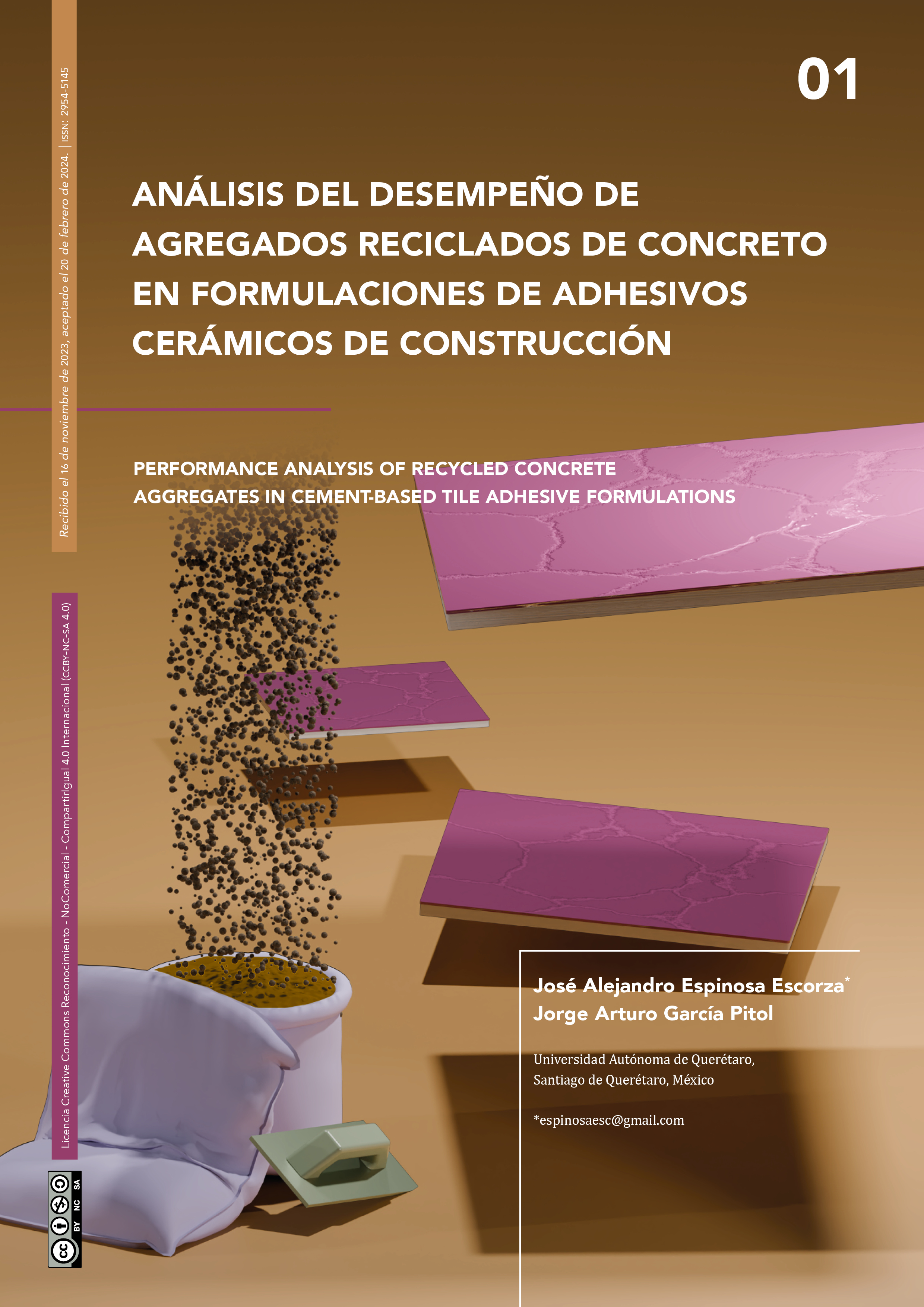Abstract
The study was aimed to analyze the performance of recycled concrete aggregates in substitution of calcium carbonates in economic cement-based tile adhesives formulations (Type A) , according with current Mexican standard code NMX-C-420-1-ONNCCE, trials were realized to evaluate formulations in fresh state, besides open time evaluation. It was made a control formula with conventional aggregates and its performance was compared against formulations with recycled aggregates. Research results suggest that it is feasible to consider the use of recycled concrete aggregates, as long as it takes into consideration a water demand increase effect, besides properly granulometric controls, and utilization of adequate methods for processing concrete wastes that do not increase their costs
References
Ali, M. B., Saidur, R. y Hossain, M. S. (2011). A review on emission analysis in cement industries. Renewable and Sustainable Energy Reviews, 15(5), 2252-2261. DOI: 10.1016/j.rser.2011.02.014
Barra de Oliveira, M. (1997). Estudio de la durabilidad del hormigón de árido reciclado en su aplicación como hormigón armado. Informes de la construcción, 48(447), 50. https://informesdelaconstruccion.revistas.csic.es/index.php/informesdelaconstruccion/article/view/976
Consejo Mundial Empresarial para el Desarrollo Sostenible. (2009). Iniciativa por la sostenibilidad del cemento. Reciclando concreto. Suiza: Atelier Point Virgule. https://docs.wbcsd.org/2009/06/e-CSI_Recycling_Concrete_Spanish.pdf
Global Cement and Concrete Association. (2021). Futuro del hormigón. Plan de trabajo hacia una industria del cemento y hormigón neutra en carbono para 2050 de la Asociación Mundial de Productores de Cemento y Hormigón. https://gccassociation.org/concretefuture/wp-content/uploads/2021/11/GCCA-Concrete-Future-Roadmap-Spanish.pdf
Lehne, J. y Preston, F. (2018). Making concrete change: Innovation in low carbon cement and concrete, de Making Concrete Change: Innovation in Low-carbon Cement and Concrete. Reino Unido: The Royal Institute of International Affairs.
Mahasenan N., Smith S. y Humphreys, K. (2003). The Cement Industry and Global Climate Change: Current and Potential Future Cement Industry CO2 Emissions. Greenhouse Gas Control Technologies - 6th International Conference. Kioto, Japón. DOI: 10.1016/B978-008044276-1/50157-4
Organismo Nacional de Normalización y Certificación de la Construcción y Edificación. (2017). Industria de la construcción. Mezclas adhesivas para instalación de recubrimientos cerámicos y piedras naturales (NMX-C-420-1-ONNCCE-2017).
PNUMA. (2019). En busca de la extracción sostenible de arena. https://www.unep.org/es/noticias-y-reportajes/reportajes/en-busca-de-la-extraccion-sostenible-de-arena#:~:text=50.000%20millones%20de%20toneladas%20de,agua %2C%20arena%20y%20grava
SCT. (2003). Normativa SCT M-MMP-1-06/03; Métodos de muestreo y prueba de materiales. Suelos y materiales para terracería. Granulometría de materiales compactables para Terracerías. México: Secretaría de Comunicaciones y Transportes.

This work is licensed under a Creative Commons Attribution-NonCommercial-ShareAlike 4.0 International License.
Copyright (c) 2024 SketchIN

